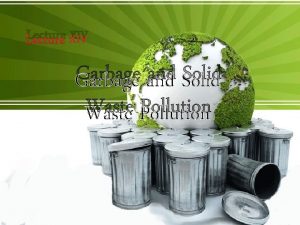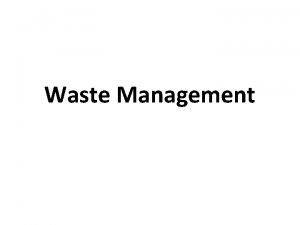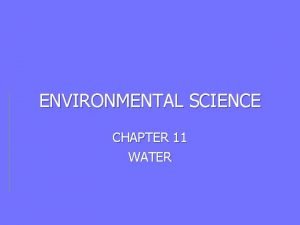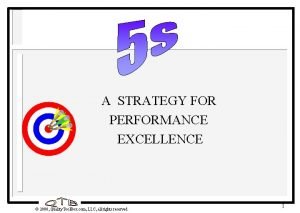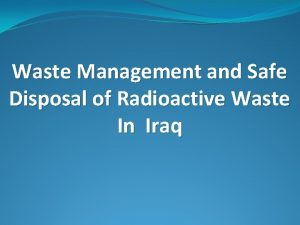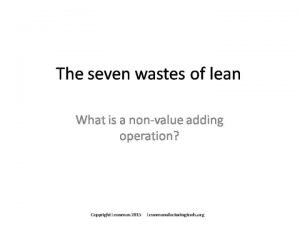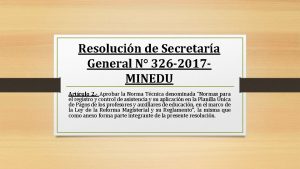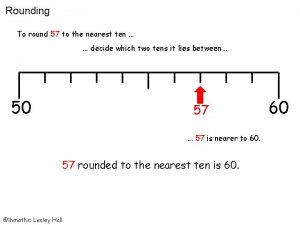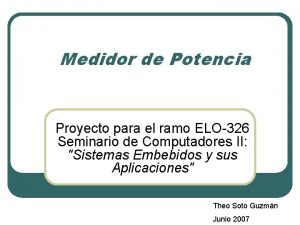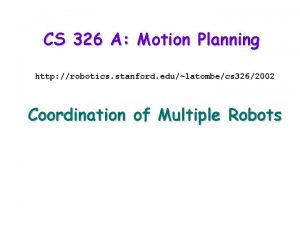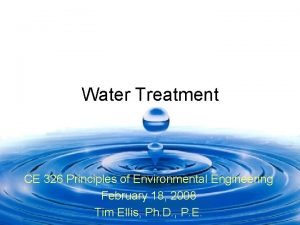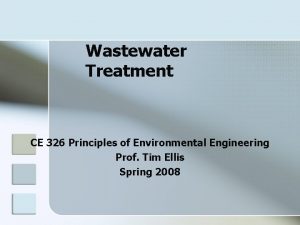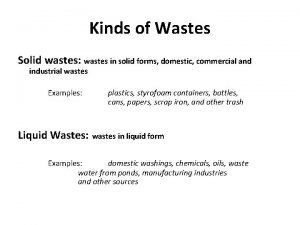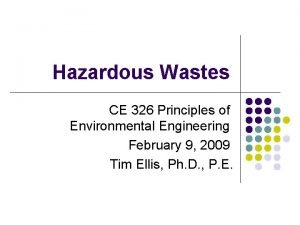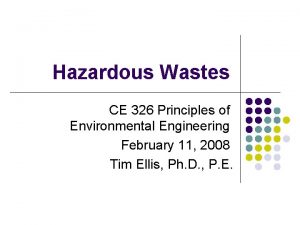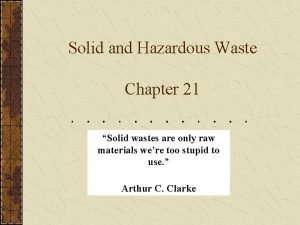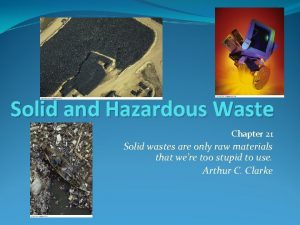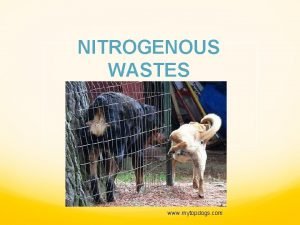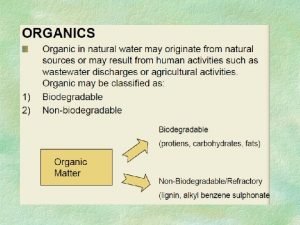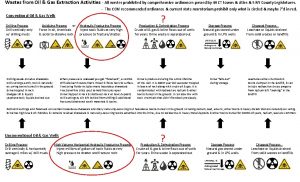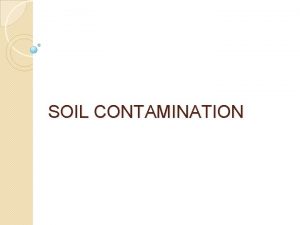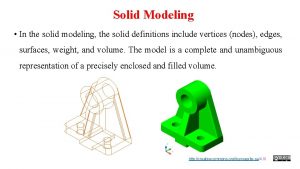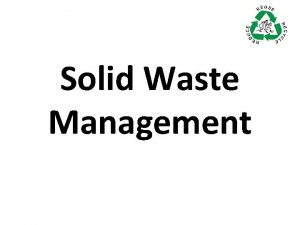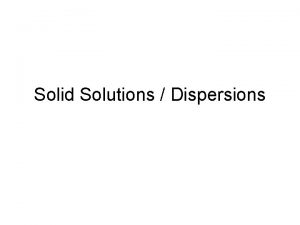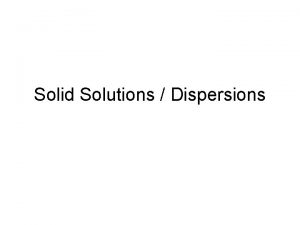Municipal Solid Wastes CE 326 Principles of Environmental
































- Slides: 32

Municipal Solid Wastes CE 326 Principles of Environmental Engineering Prof. Tim Ellis February 4, 2008 http: //www. pbase. com/globetrotter 81/image/45798332

What is a solid waste all wastes from human and animal activities that are normally s_____ or semis_______ and are d______ (includes municipal, industrial, and hazardous wastes). http: //www. pbase. com/globetrotter 81/

What is Solid Waste Management? activities involved with the n n reduction of g_______, c_______

What is Solid Waste Management? s_____, t_____, p_____, and d_______ of solid wastes.

Trash to energy

What is Solid Waste Management? solid waste management concerns n n n public h__________, e_________, conservation, aesthetics, and other environmental considerations.

What is Integrated Solid Waste Management? Activities designed to meet the hierarchy of MSW management objectives S______ R______ and R___ T_____ D_______ http: //www. pbase. com/globetrotter 81/

Waste Generation Waste handling, separation, storage, and processing at the source: • shredding, baling • separation for recycling Collection Processing Facility • recycling • resource recovery • incineration • composting Transfer Station Ultimate Disposal • landfill http: //www. pbase. com/globetrotter 81/

Quantities of Solid Waste Produced total production is approximately = _____ million tons/yr (decrease of 1. 6 M tons from 2004) average solid waste generated person = ___ lbs/day total production = _____ tons/day n n density = _____ lbs/yd 3 if placed in 3 foot layer, it would cover _____ sq. yds. ____ sq. miles if placed in 1 cu. ft. stacks, it would rise ______ miles high

One year’s worth of solid waste from a single household

Characterization of Solid Waste Kind, composition, and source. Material Product category

Characterization of Solid Waste Two mains categories: n G_____ animal and vegetable waste resulting from f______ preparation, originates primarily from k____ and r_____ large part of the putrescible matter in MSW, source of o_______

Characterization of Solid Waste R_____: n combustible and non-combustible components of MSW combustible fraction includes: n n p_______, r______, cartons, boxes, furniture, tree branches, etc. T______ is synonymous with combustible portion of rubbish Noncombustibles n includes i_______ portion of rubbish: tin cans, metals, glass, etc.

Other categories A____ S_______ Refuse Dead A_____ Abandoned v______ I______ Wastes (food processing wastes, lumber and metal scraps, shavings) D_____ Wastes (lumber, pipes, bricks, masonry) C_______ Wastes (lumber, pipe, scraps) Special Wastes (includes hazardous substances, explosives, radioactive materials) W_______Treatment Plant Residues (includes screenings and grit)

MSW Composition by Material p_____ and paperboard g_____ m_______ (steel, aluminum, other nonferrous metals) p_____ r_____ and leather t______ w_____ other m______

MSW Composition by Product Category c_______ and packaging n______ goods (e. g. , newspapers, “selected consumer electronics”) d______ goods (e. g. , appliances) y_____ trimmings f_____ scraps other

Integrated Solid Waste Management Priority is on s____ r______

Second Priority following Source Reduction is Recycling and Reuse. _______% recycling rate in 1999 (64 M tons) vs. 32% in 2005 (58. 4 M tons MSW + 20. 6 M tons compost) ____ curbside recycling programs in 1998 vs. 8, 550 in 2005 ____ yard trimmings and composting programs in 1997 vs. 3, 470 in 2005 combusted for energy recovery n n n 2. 7 M tons 1980 29. 7 M tons 1990 33. 4 M tons (13. 6%) 2005

Least Favorable MSW Management Activity: Ultimate Disposal (e. g. , landfills) n Number of landfills in U. S. continues to decrease from about ____ in 1988 to about ____ today

Landfills must: n n n n keep out regulated h_____ w_____ apply a d______ c_____ control d____ v______ populations (rodents, flies, mosquitoes, etc. ) m_______ gas restrict p____ a_____ control s____ w______ run-on and run-off protect s______ w______ from pollutants and keep appropriate r_____

Design Standards n n Landfills must be designed to ensure d______ w______ standards are not exceeded in ground water. Landfills must be designed with a c_____ l______ made of synthetic material covering a two-foot c___ l_____.

Ground-water Monitoring and Corrective Action n n All landfills must have monitoring w____ to detect any groundwater contamination. if ground-water is contaminated, the owner/operator is required to clean it up to acceptable standards to protect human health and the environment.

Closure and Post-Closure Care n n When a landfill stops accepting waste it must be covered to keep any liquid away from the buried waste. Once the landfill is closed, the owner/operator is responsible for maintaining the final cover, monitoring ground water and methane gas, and continuing leachate management for 30 years.

Financial Assurance n n Landfill owners/operators must show that they have f______ mechanisms to cover the costs of closure, post-closure care, and any needed cleanups from releases. Financial mechanisms can include s_______ bonds, letters of credit, insurance, or guarantees, among others.

Financial Assurance n n The majority of landfills are small (less than 20 tons of municipal solid waste per day) and some may qualify for an exemption from the design standards, ground-water monitoring, and corrective action requirements. To qualify for an exemption, a small landfill must not be causing ground-water contamination, and must be located in either a very dry climate or a very remote location.

Parts of a Solid Waste Landfill:

Parts of a Solid Waste Landfill:

Liner: n Composite:

Leachate: LCRS:

Cell: Daily Cover: Lift: • Final Lift:

Final Cover Cap

Post Closure
 Definition of solid waste management
Definition of solid waste management Wicler
Wicler Liquid wastes examples
Liquid wastes examples Chapter 11 water environmental science
Chapter 11 water environmental science 9 wastes
9 wastes 8 wastes examples
8 wastes examples Nuclear wastes
Nuclear wastes Iaea
Iaea Leanmanufacturingtools.org
Leanmanufacturingtools.org Seven wastes lean
Seven wastes lean What are nitrogenous wastes
What are nitrogenous wastes Wireless charging wastes energy
Wireless charging wastes energy Mh 605
Mh 605 Honors its atomic
Honors its atomic Example of solid solution are
Example of solid solution are Covalent molecular and covalent network
Covalent molecular and covalent network Crystalline vs non crystalline
Crystalline vs non crystalline Crystalline solids
Crystalline solids Crystalline solid and amorphous solid
Crystalline solid and amorphous solid Law of constancy of interfacial angle
Law of constancy of interfacial angle When a solid completely penetrates another solid
When a solid completely penetrates another solid When a solid completely penetrates another solid
When a solid completely penetrates another solid Evaporation mixtures examples
Evaporation mixtures examples Rsg 326-2017-minedu
Rsg 326-2017-minedu A jiboia
A jiboia 4 sinf ona tili 184 mashq
4 sinf ona tili 184 mashq 151 rounded to the nearest ten
151 rounded to the nearest ten Elo-326
Elo-326 Ssis-326
Ssis-326 Nrobot
Nrobot Cs 326 stanford
Cs 326 stanford Bismarckk
Bismarckk 326 ce
326 ce

